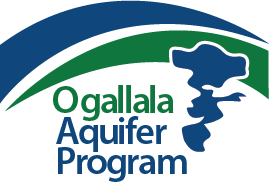Ogallala Aquifer Program (OAP) scientists are requested to submit a detailed Project Plan (suggested length 3-5 pages) that addresses the overall OAP Goal of “Developing and evaluating water management strategies and technologies for maintaining and/or enhancing the economic viability of the agriculture industry and the vitality of the Southern Ogallala Aquifer Region.” The process for this year will be similar to the past, but not identical and due dates are sooner. Because of the earlier due dates, it is imperative that teams form and work on preplans before the OAP Workshop in March. There will be time set aside at the workshop for finalizing preplans. Note that there is a new emphasis on water-wise forage production.
Projects Plan Narratives (including the Budget Justification Table) as Word documents are due by April 12, 2024. Please submit them to Gwen Coyle at gwen.coyle@usda.gov.
Budgets are due April 19, 2024. Please send as Xcel files using the template provided.
Download Project Plan documents here.
Projects addressing the following five sub-objectives will have a greater chance for support:
1) Develop and evaluate water management strategies and technologies, including dryland cropping systems, that could reduce water withdrawals for irrigation while maintaining and/or enhancing the economic viability of the agriculture industry and the vitality of the Southern Ogallala Aquifer Region.
2) Develop and evaluate management strategies and technologies that would increase the productivity and profitability of forage or other short-season cropping systems that reduce or eliminate water withdrawals.
3) Improve the understanding of hydrological and climatic factors that affect water use and economic profitability, and provide estimates of the climatic, hydrologic, cropping, and profitability conditions that are likely to occur on the southern High Plains over the next 50 years.
4) Determine the impacts of alternative water withdrawal/use policies on the economic viability of the agriculture industry and the vitality of the Southern Ogallala Aquifer Region.
5) Develop best management practices for alternative crops that increase the sustainability of dryland farming or high value crops that maintain farm income with decreased pumping from the Ogallala Aquifer.
Plans may address more than one sub-objective. The prioritization process will favor projects that are multi-institutional and multi-disciplinary. Submissions will be evaluated by peer scientists and members of the OAP leadership using the attached OAP PrePlan Rating Sheet as a guide.
The preplan submission should be divided into eight sections, including:
1) Title
2) Investigator(s) on the research team and their institutional affiliation
3) Estimated total budget:
4) Summary/abstract
5) Project narrative
a) Objective(s)
A brief statement identifying the OAP overall objective or sub-objective(s) being addressed and how the results will help to achieve the objective. If the proposed work cannot be readily captured in the five existing objectives, describe how the proposed work addresses one of the two items in the appropriation language: 1) tools/knowledge to conserve groundwater in the Ogallala Aquifer; and 2) tools/knowledge to aid policy makers to create water policies that are scientifically sound.
b) Rationale/Literature Review/ Conceptual framework
This section should provide the rationale for the proposed research. This rationale can be achieved in different ways including, but not limited to: 1)
review of the literature to identify knowledge gaps; and 2) theoretical analysis of the problem and concept(s).
c) How the objective(s) will be met
Statement of proposed activities including but not limited to experimental design, methods, procedures, etc. Does the research plan leverage unique resources? The use of timelines is encouraged. Good preplans will include an appropriate economic assessment, and technology transfer activities.
d) Expected Outcomes
How will these results potentially change either groundwater use or water policies
6) Qualifications of researchers
7) Technology transfer plan:
8) Literature Cited / References
Budget Information: Due April 19, 2024.
One budget Excel file must be submitted for each PrePlan. These need to be submitted as an Excel file to facilitate processing. The budget justification form (Word document) must be submitted as well.
OAP typically does not reimburse for equipment purchases. All other direct expenses, including but not restricted to, greenhouse and field usage fees, sub-contracts for professional services (computer programming, sample analyses, etc.), etc. need to be described both on the form and in the PrePlan narrative. Scientists should have their budgets reviewed by the appropriate pre-award offices at their university prior to submission. However, cooperator’s contribution does not need to be completed.

